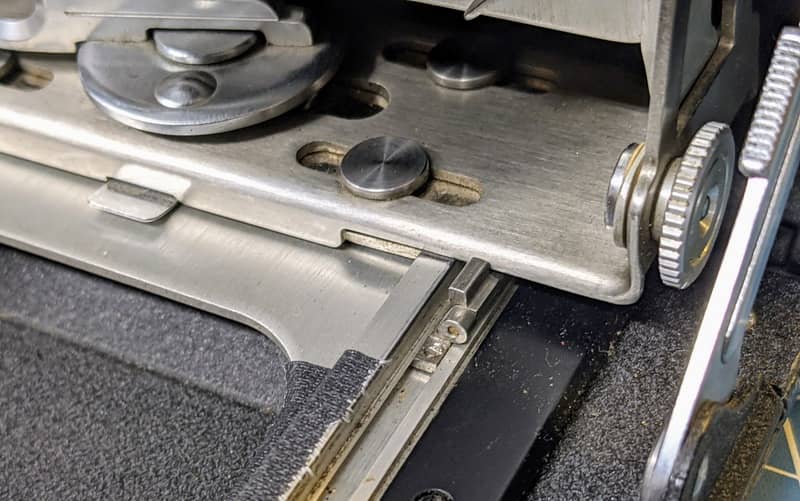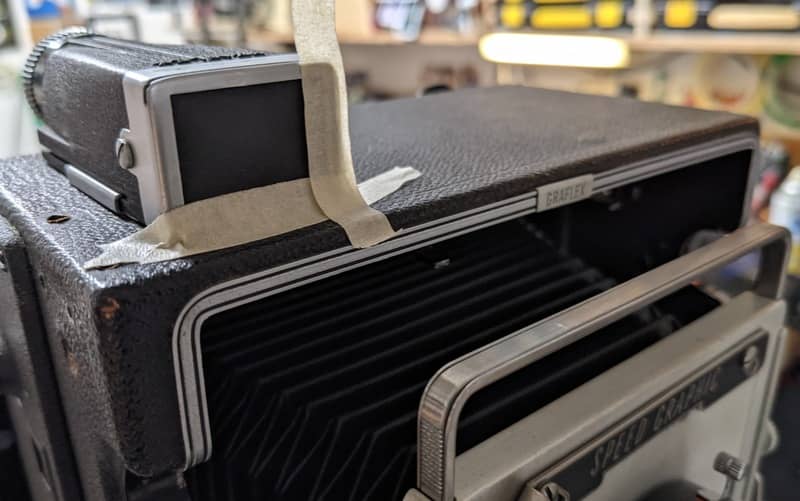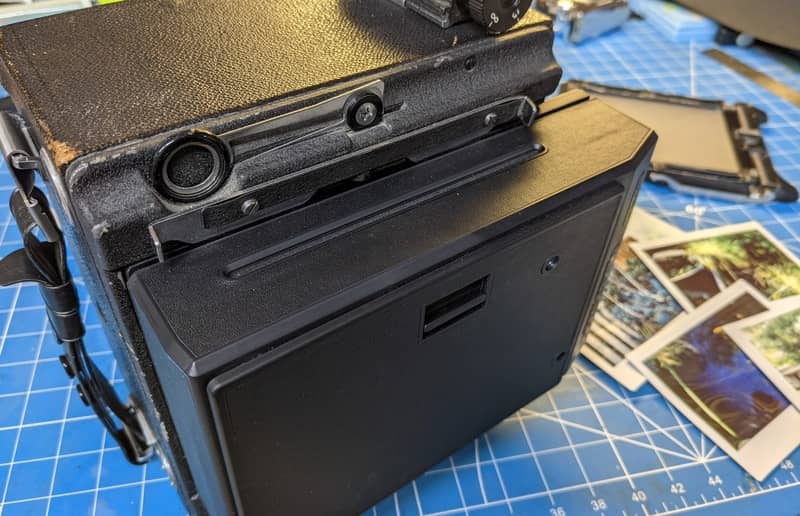It will come as no surprise to anyone that I really enjoy instant photography. I have written extensively about instant film over the years, used it recently in story telling, and built rigs to make better photographs. When my long ago pre-order for a LomoGraflok instant back showed up unexpectedly early in the fall I was ecstatic. More instant film shooting options? More happy people walking away with an above average artifact of a happy moment? Yes please.
I grabbed my Chamonix 45F-2, mounted my Symmar-S 210 and bellowed “I need a kid on set!”. This usually has the opposite effect where the kids run away from the request, but in this case I was able to rope the teenager Alli into this.
“Don’t mount the flash that’s all I’m saying.”
In the case of FujiFilm’s Instax Wide film, the color film rates at around ISO 800 so I figured I could squeeze out enough light in the room without the flash. A little focusing with the spacer that comes with the back and a few snaps later I was pretty pleased. Not a lot of latitude in the film, but all the joys of instant photography on less expensive film than my remaining packs of FP-100C and FP-3000B—which I have heavily guarded.
That said the back itself does not lend itself to my workflow very well. The film plane spacer is frustrating from a proof-and-shoot standpoint. Even today when I’m shooting FP-100C, I almost always shoot back to back instant and film without refocus. If you’re not shooting with film holders this is probably not a problem, but it’s just not the way I shoot 4x5.
Along those lines, it’s not fast to swap this in when you’re ready to expose. You have to pull the spacer, pull the ground glass, slot the back, and then shoot. Those two extra steps are slow and I don’t think I could speed it up if I wanted to.
Which left me with a quandary: what am I going to use this back for?
Enter my Speed Graphic.
My Speed Graphic was a gift from my wife before we were even married some 15 years ago. With a high speed focal plane shutter and a graflok back it has proved endlessly versatile over the years. I still use it with barrel lens when I need a shutter speed that’s out of reach of the old lens-cap-pop method. As I recalled I still had the 135mm Graflex Optar lens somewhere—equivalent to about 40mm on 35mm film. I could open the lens up, use the focal shutter and reset the infinity locks with the spacer accounted for. Walk around fun.
I grabbed the camera, mounted it on a tripod and stripped the rangefinder and the 135mm cam arm. I slotted the spacer and found the infinity focus and then verified with a tape measure the focus range to verify the scale matched up. Once found, I carefully loosened the infinity stops and moved them into place.
 The infinity stops moved back to account for the LomoGraflok spacer, the black gaffer tape denoting the previous location.
Justin Ribeiro
The infinity stops moved back to account for the LomoGraflok spacer, the black gaffer tape denoting the previous location.
Justin Ribeiro
At this point I verified that the viewfinder would probably need a bit of a mask, so I focused to a test point and then tapped out the rough equivalent and cut a small mask with thin black matte paper. The viewfinder scope support this without modification, just slot into place and go.
 Masking tape acts as a temporary mask to validate the film location through test shots.
Justin Ribeiro
Masking tape acts as a temporary mask to validate the film location through test shots.
Justin Ribeiro
At this point, I was ready to shoot some frames. I pulled the ground glass and mounted the LomoGraflok and ran around testing things out.
 Not small: the LomoGraflok mounted on the Speed Graphic.
Justin Ribeiro
Not small: the LomoGraflok mounted on the Speed Graphic.
Justin Ribeiro
Zone focus, eyeball the exposure, snap. After a pack or two, I can attest that:
- It’s a lot of fun.
- I can skip arm days at the gym when I use it because this thing weighs an absolute ton. The Speed Graphic was never a light camera (especially this version with the focal plane shutter), but wow, that’s a work out.
- It’s a lot of fun and I don’t care about #2.
Maybe the LomoGraflok doesn’t work when great for my usual 4x5 workflow, but it sure seems at home in this Speed Graphic setup. I’ll put it through the paces over the holidays and see what else I come up with.
Maybe I throw the flash on there just to mess with the kids.